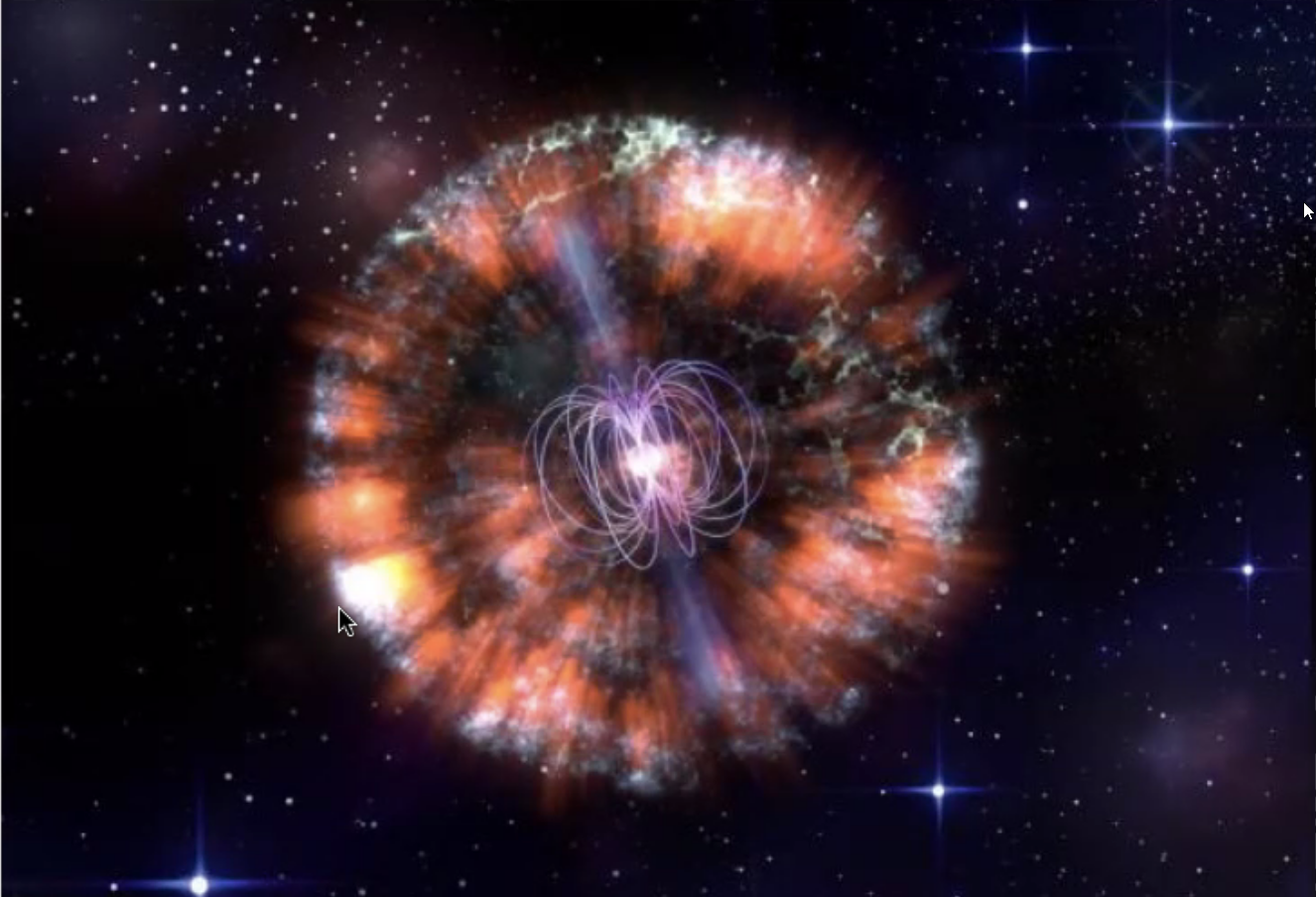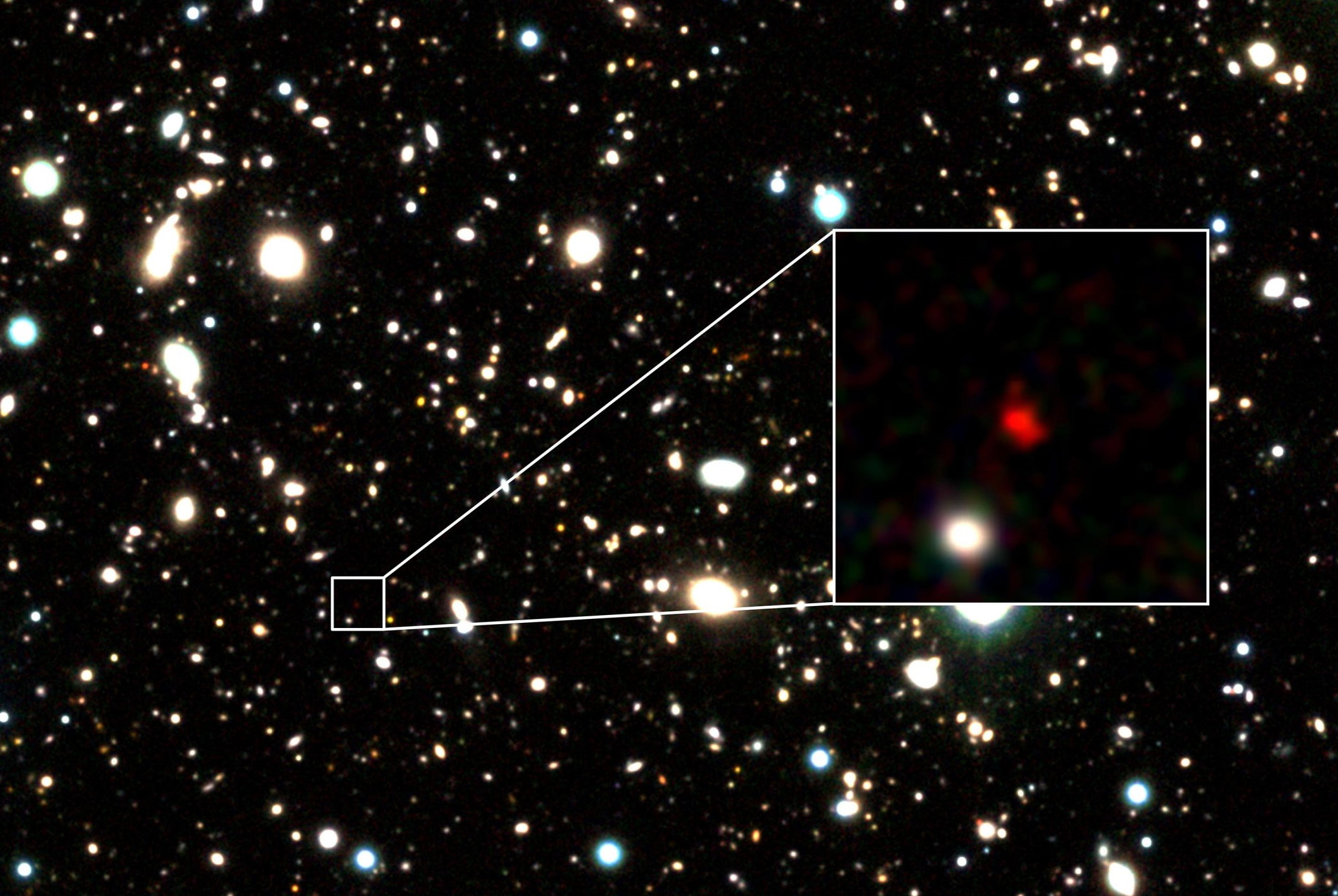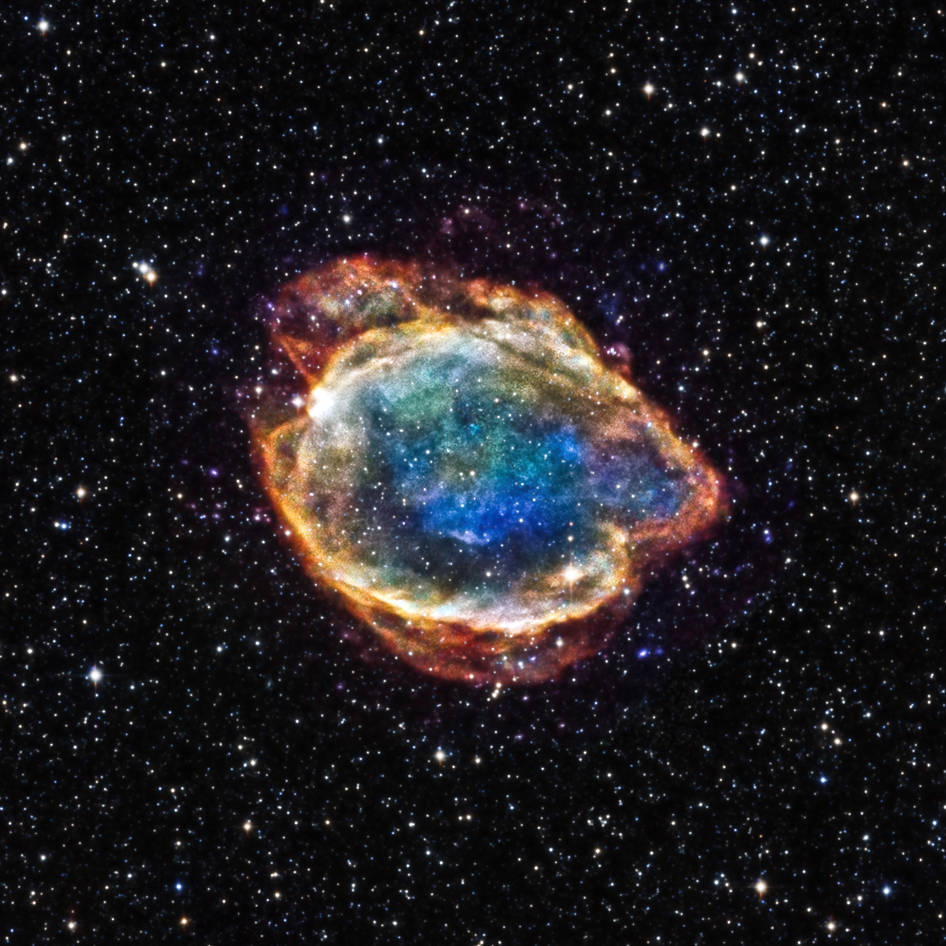Most distant laser ever found in a galaxy 6.6 billion light-years away
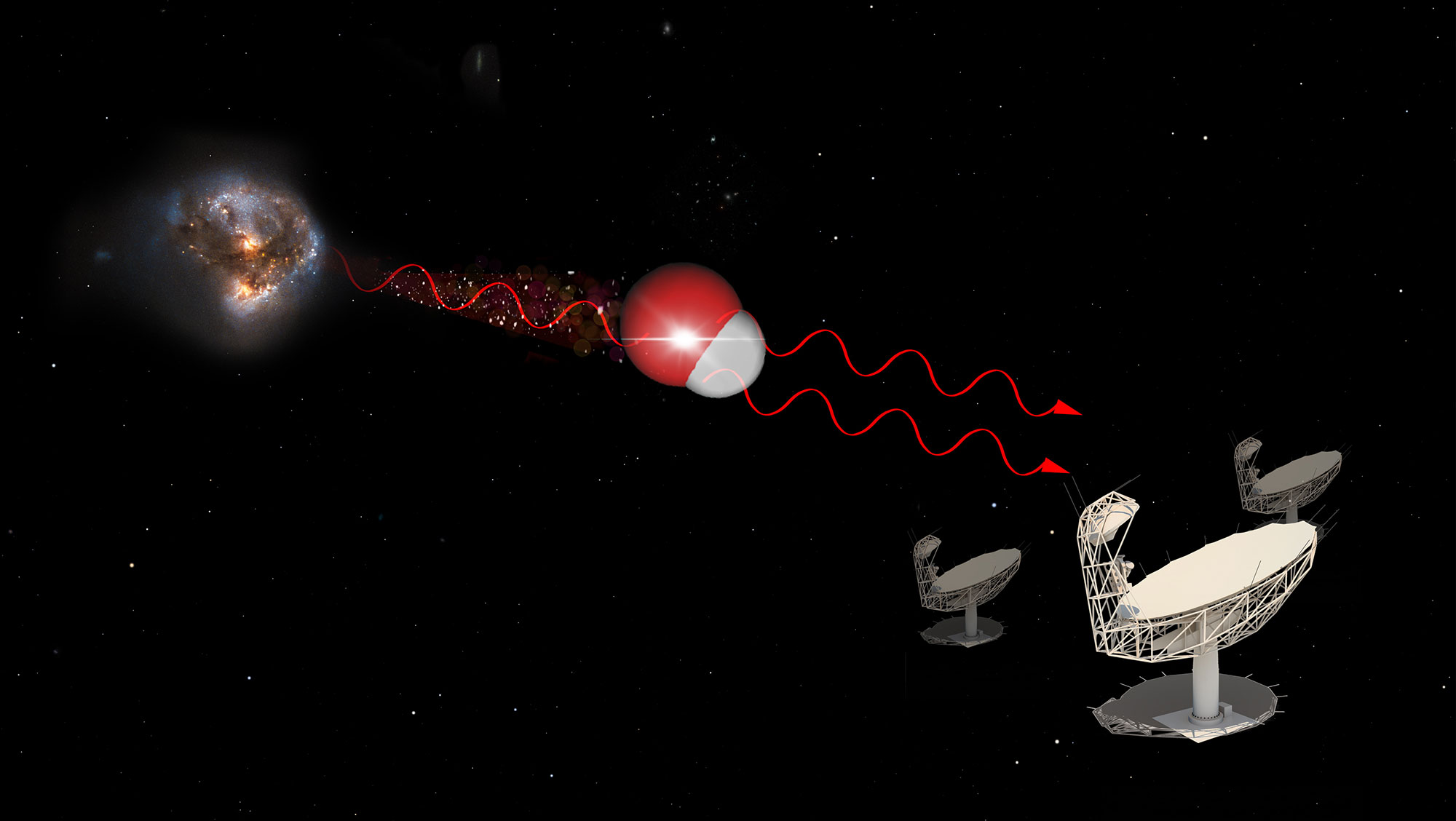
- Lasers aren't only produced by humans here on Earth, but occur naturally in space as masers and, more powerfully, as megamasers.
- While mapping out the neutral hydrogen in the Universe, the MeerKAT array serendipitously discovered the most distant megamaser ever, located 6.6 billion light-years away.
- Known as Nkalakatha, the Zulu word for "big boss," the natural laser alone is as bright as more than six thousand Suns: perhaps the most powerful laser ever seen.
Here on Earth, the very idea of a laser is relatively novel, having only been invented in 1958. The underlying physics is straightforward, as a molecule gets excited to a higher-energy state, the electron de-transitions back to the lower energy state, emitting light of a very specific wavelength in the process. By re-exciting the molecule back into that higher-energy state, over and over, light of precisely that same, monochromatic wavelength gets emitted over and over. So long as you continue stimulating the same transition, you’ll keep getting that same frequency light over and over again.
But out there in the Universe, the phenomenon occurs naturally in a number of galaxies at much longer wavelengths than the eye can see: in the microwave portion of the spectrum. Astrophysically, these objects are known as masers, and arise when energy gets injected into large populations of molecules that only de-excite in specific ways. Using the MeerKAT array, scientists recently identified the strongest, most distant maser ever seen: an object so strong that it’s more luminous, just in that one emission line, than the total light emitted from 6,000 Suns. This record-breaking megamaser really is a laser from space, and its story is billions of years in the making.
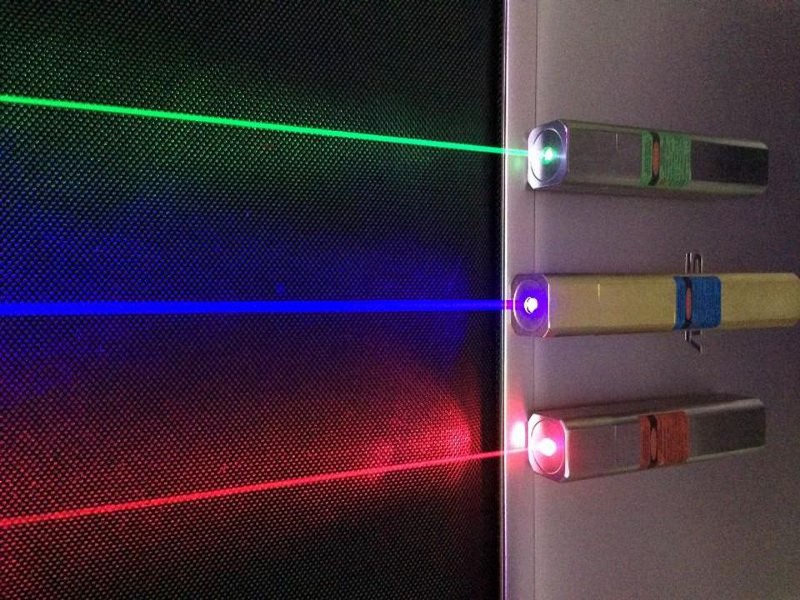
In our terrestrial laboratories, the way a laser works is both straightforward and remarkably informative, with applications to the larger Universe. Originally, laser was an acronym for Light Amplification by Stimulated Emission of Radiation, and the way it works is as follows.
- You start with a system, like an atom, a molecule, or a crystal, that has multiple allowable energy states.
- The electron moves into an excited state, one that has the potential to transition to the same lower-energy state every time.
- You then stimulate that excited state with a photon of the desired wavelength, causing the excited state to de-excite and emit another photon of the desired wavelength.
- And then you pump energy back into the system, causing the de-excited component to enter back into the excited state.
It’s these oscillations of the electrons, from the lower energy state to the higher one and back down again, where the last step causes the emission of a photon of a very specific wavelength, that leads to the coherent, monochromatic light that’s characteristic of a laser. Ironically, nothing is being amplified; rather, we’ve adopted the modern term laser because of the distaste that would come along with the acronym Light Oscillation by Stimulated Emission of Radiation.
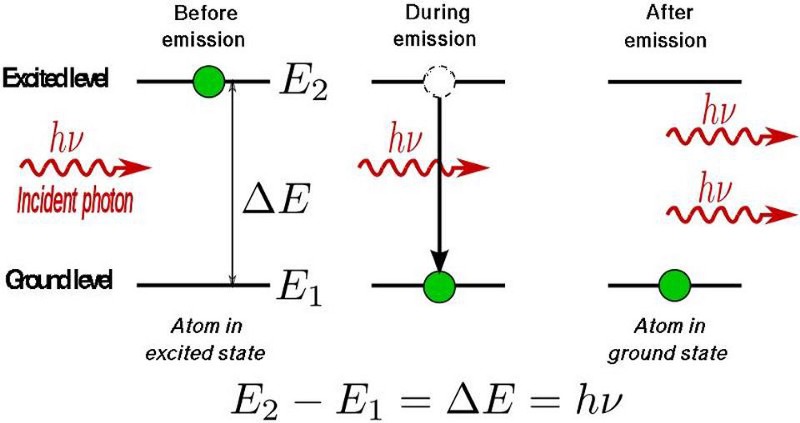
In laboratory experiments, one of the “holy grails” of laser physics is to get to the highest possible intensity of light, where intensity is energy per unit time per unit area. If you want a more intense laser, you can either increase the total amount of energy in your laser, decrease the amount of time over which the energy in a laser “pulse” is emitted, or collimate your laser more pristinely, so that the beam intercepts a smaller area.
Laser light can either be continuously emitted or “saved up” and emitted in a single burst. The latter option has a number of important applications in physics, engineering, and technology, and the fundamental technique used to achieve high-powered, short-period pulses without destroying the amplifying material was worth a share of the 2018 Nobel Prize. By creating relatively standard high-powered laser pulses, stretching them in time, amplifying the lower-power but time-stretched pulses, and then time-compressing the pulses again, an ultra-short, high-intensity laser pulse was created for the first time.
This 1985 breakthrough, by Gérard Mourou and Donna Strickland, has led to laser powers that were unimaginable without this chirped-pulse amplification technique.

In space, nature is incapable of exerting that type of control over the light that’s produced. What does occur, however, is fascinating in its own right. All throughout the Universe, ever since the first generations of stars lived-and-died, the cosmos has not only been populated with hydrogen and helium, but all sorts of atoms. Oxygen, carbon, neon, iron, nitrogen, silicon, magnesium, and sulfur, for example, are the third-through-tenth most common elements in the Universe today.
This means that bound states involving these atoms, particularly if they’re simple bound states, should be found in many locations naturally, including in the interstellar space separating the stars within a galaxy. Some of these bound states lend themselves to the stimulated emission of radiation, even in astrophysical environments, including:
- hydroxyl (OH),
- methylidyne (CH),
- formaldehyde (CH2O),
- water (H2O),
- ammonia (NH3),
- methanol (CH3OH),
- silicon monoxide (SiO),
- silicon monosulfide (SiS),
- hydrogen cyanide (HCN),
- and carbon monosulfide (CS).
All of these molecules, under the right physical circumstances, have been observed to emit stimulated emission in space.
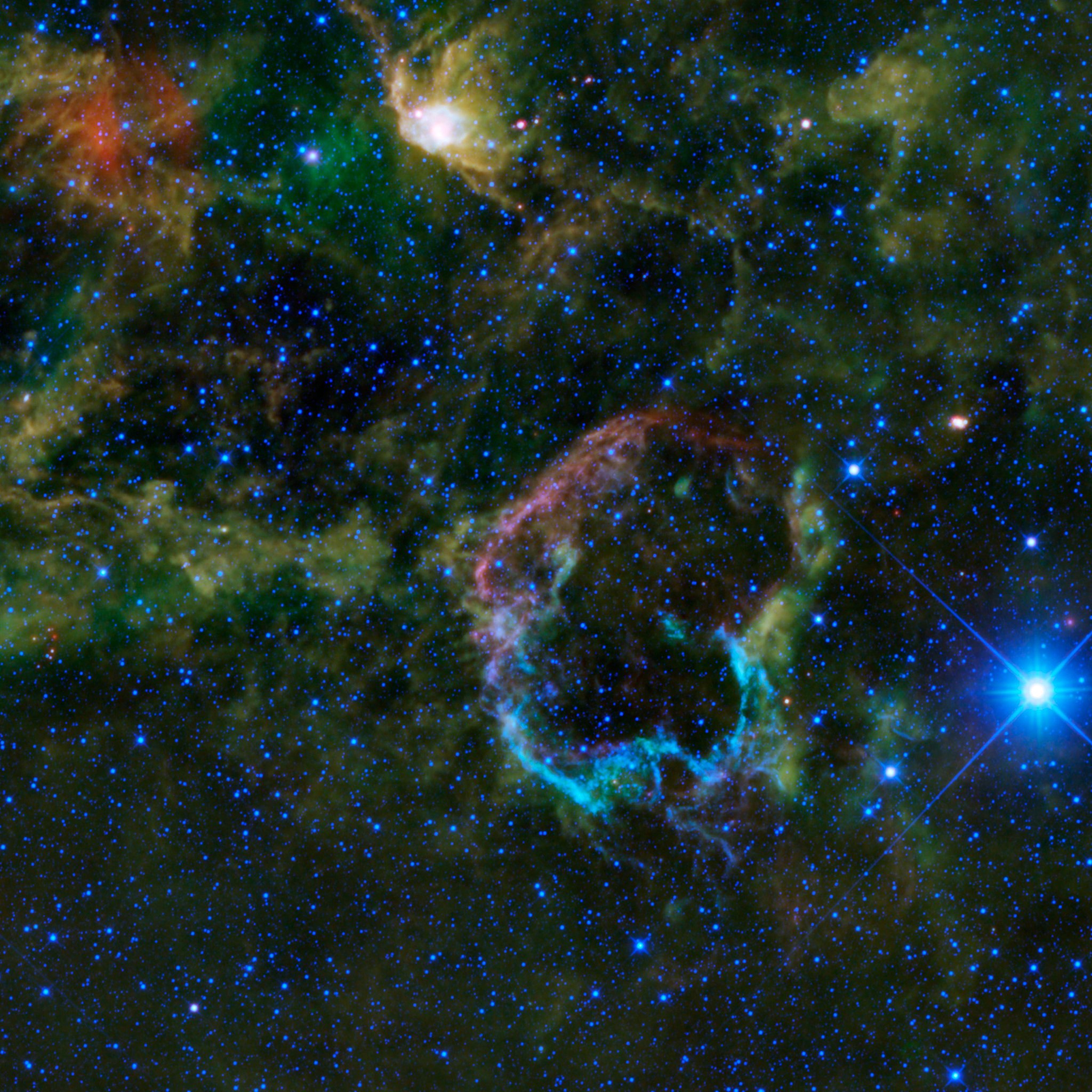
Unlike in terrestrial laboratory experiments, where masers have been created since 1953 (predating lasers by years, with the latter being known as “optical masers” before the “laser” acronym caught on), there is no possibility of a resonant or oscillatory cavity in space. All you need is an energy source injected into some sort of “gain medium,” which is effectively just a pile of gas in space, that gets excited to a higher-energy quantum mechanical level. When the molecules de-excite, monochromatic, microwave light is produced, resulting in a single-pass laser, as opposed to the more common laboratory-based oscillator-driven laser.
With oxygen being the third most common element (and hydrogen being the first) in the Universe, it’s no surprise that hydroxyl (OH) masers were the first ones discovered, followed by water, methanol, and silicon monoxide. Astrophysical masers require that these molecules exhibit a significant amount of velocity coherence, otherwise there would be radiative couplings between different parts of the gain medium. The radiation is generally unpolarized, unlike laboratory-based laser light, unless the gain medium possesses a substantial magnetic field. And the radiation is generally quite weak, as the surrounding unpumped molecules are often capable of absorbing practically all of the emitted maser light from the gain medium.
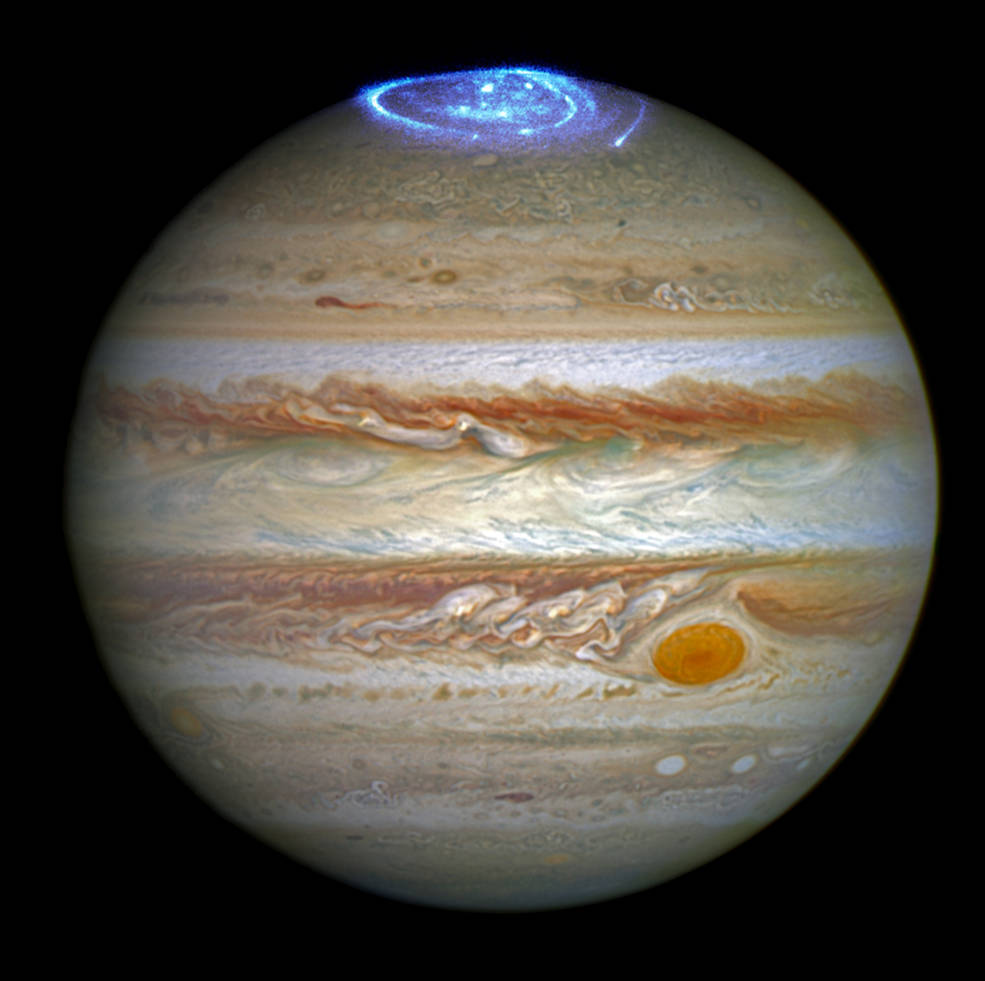
You might think that you would need a highly specialized environment for a maser to exist and be detectable, but that turns out not to be the case at all. Masers have been found:
- in the environments of comets, where vaporized volatile molecules create them,
- in the atmospheres of planets, such as when aurorae generate cyclotron masers,
- on the moons of the outer planets, where water masers have been detected in the plumes associated with Hyperion, Titan, Enceladus, and Atlas,
- in the atmospheres of highly evolved stars,
- in supernova remnants that interact with molecular clouds,
- and in star-forming regions, where young stellar objects and compact regions of ionized hydrogen gas produce the majority of astrophysical masers, including some of the rarest ones.
If you know something about star-forming regions, you might realize that the Milky Way itself isn’t remarkably rich in star-formation, but there are other galaxies that are. Therefore, you might think that a galaxy rich in ionized gas, like a merging galaxy, a starburst galaxy, or a galaxy with an actively feeding central black hole might be an excellent candidate for producing a maser of far greater power than we’d ever see within our own galaxy.
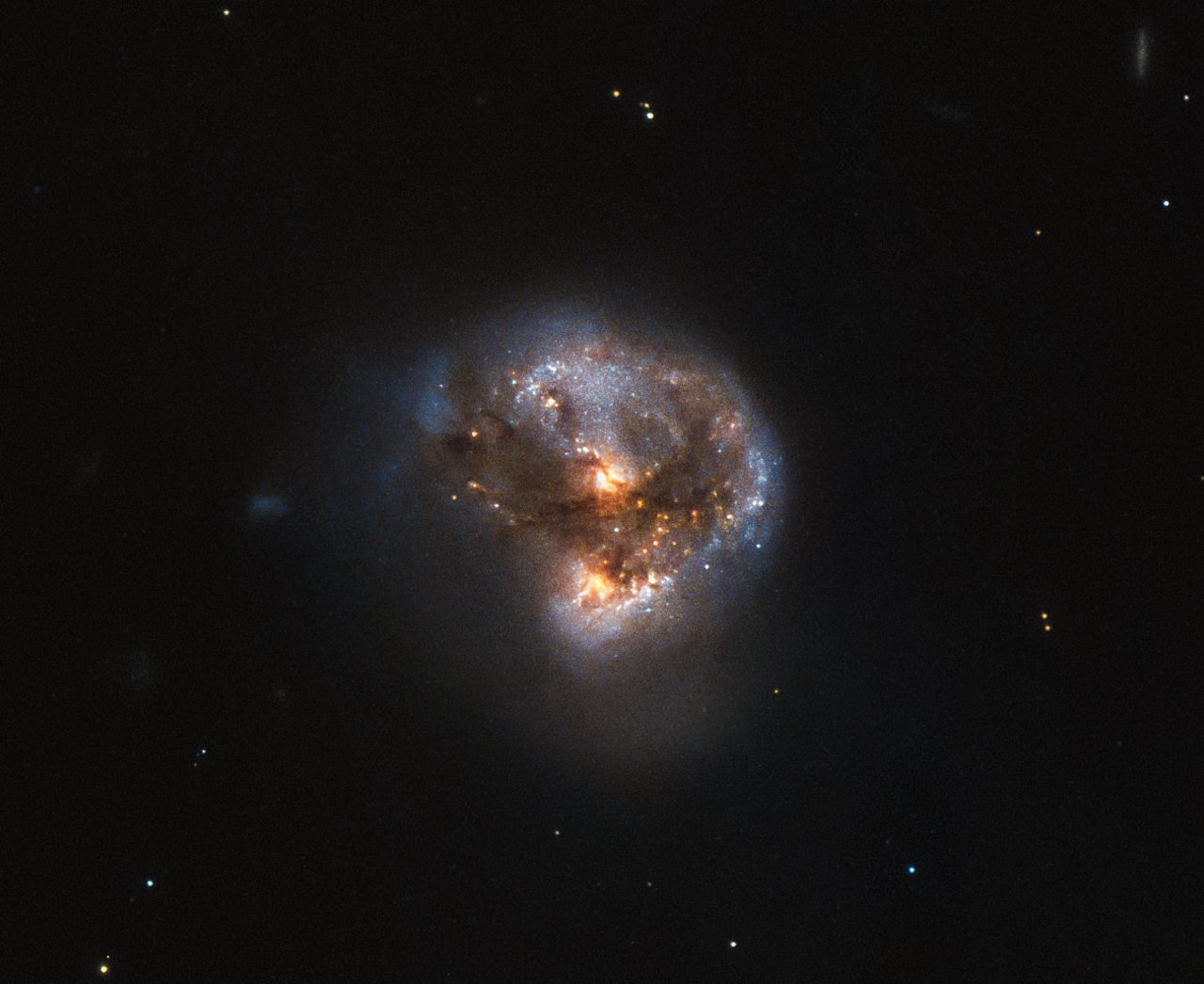
As it turns out, these objects do exist, and are known as megamasers. The first two types of megamaser ever discovered are also the most common ones: water (in 1979) and hydroxyl (in 1982). The first hydroxyl megamaser system ever seen, interestingly enough, occurred in the peculiar galaxy Arp 220 (below). At 250 million light-years away, Arp 220 is remarkable in its own right: it’s the closest ultraluminous infrared galaxy in the known Universe. Ultraluminous infrared galaxies are bright, with more than one trillion times the luminosity of our Sun, with more energy in the infrared than all other wavelengths combined, and where the overwhelming majority of their brightness is created by the stars forming within them.
Arp 220 itself is the result of two galaxies that collided just a few hundred million years ago and are now in the process of merging. A massive, recent burst of star-formation has occurred all throughout the galaxy: evidence of a starburst event. Hubble has imaged the central core of this galaxy, revealing hundreds of massive young star clusters, with the most massive containing around ten million solar masses worth of material: about 250 times more massive than the largest star-forming region in our Local Group. Arp 220 also contains two bright masers, with one being a hydroxyl maser and the other being a water maser, and an enormous amount of neutral gas: billions of solar masses worth.
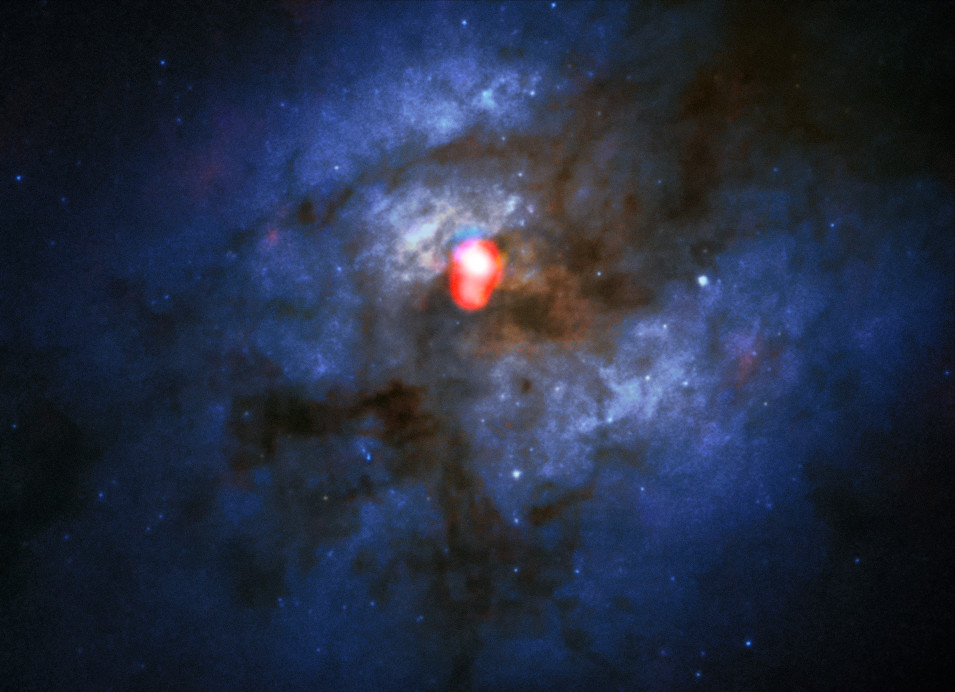
As it turns out, every hydroxyl megamaser that’s ever been discovered also is found within in a luminous infrared galaxy, with the only differences between them being the size, mass, and brightness of both the galaxy and the megamaser. Typically, what’s thought to occur in these megamasers is a little bit different than in conventional masers, as the young starlight in these objects gets absorbed and re-emitted by the surrounding interstellar dust. (This is similar to how Earth absorbs sunlight of all wavelengths, but re-emits it in the infrared.) That infrared light can then excite the hydroxyl molecules, which leads to the resulting megamaser emission.
Typically, hydroxyl masers within the Milky Way emit about 0.001% of the light of the Sun at those specific microwave maser frequencies. When Arp 220 was discovered, it was termed a “megamaser” because it’s approximately 100 million times as luminous as a typical maser. Today, there are over 100 known hydroxyl megamasers, and they all:
- are very gas rich,
- have experienced recent galaxy mergers,
- have high molecular densities and high star-formation rates in their centers,
- and have copious amounts of dust that gets heated, causing a very high luminosity in the far-infrared part of the spectrum.
Up until this year, the farthest hydroxyl megamaser was discovered by Arecibo, at a distance of 3.7 billion light-years away.
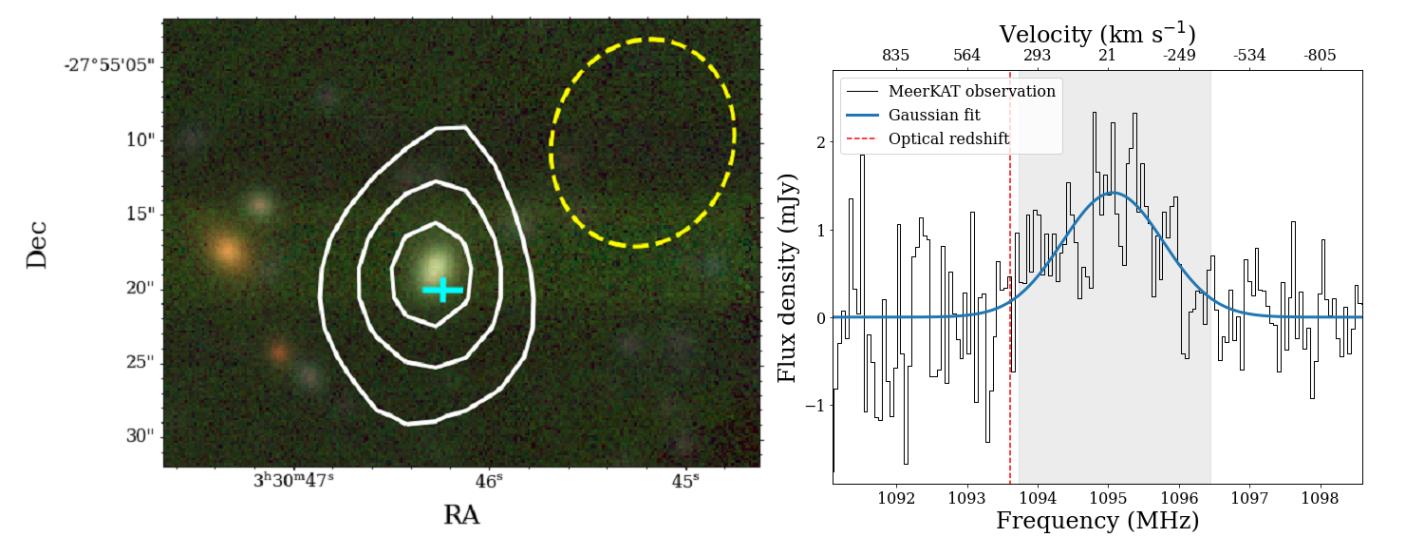
All of that changed on April 6, 2022, when the preprint of a paper by the Looking At the Distant Universe with the MeerKAT Array (LADUMA) collaboration appeared. Eventually slated to be part of the Square Kilometer Array, a series of radio telescopes which will become the world’s largest, the MeerKAT array contains 64 independent antennas that all function together. The LADUMA collaboration targeted a single patch of sky which encompasses the entire extended Chandra Deep Field South, targeting neutral hydrogen emission lines and serving as a complement to Chandra’s X-ray views, NASA’s WISE mission’s data, and the European Southern Observatory’s VISTA observations of the same region.
What they found, coincident with a galaxy at precisely a redshift of 0.5225, was a megamaser, the most distant and one of the most powerful ever seen, named Nkalakatha: the Zulu word for “big boss”. The megamaser displayed an unambiguous emission line (above) that corresponds to the main hydroxyl emission line, normally seen at 1667 megahertz, redshifted to an observed frequency of 1095 megahertz. That’s exactly what you’d expect if you divided 1667 by (1 + 0.5225): a smoking gun for a megamaser signature. Exactly as expected, this galaxy does turn out to be an ultra-luminous infrared galaxy at a distance of 6.6 billion light-years away, with a megamaser luminosity that’s 6,300 times as great as the Sun. Far and away, it’s the most distant megamaser ever seen, and almost twice as far away as the previous record-holder.
In fact, of all the megamasers ever discovered, this is one of the most luminous both in terms of the brightness of the host galaxy and of the megamaser itself. In a very real way, it’s the most distant laser ever seen in the Universe.
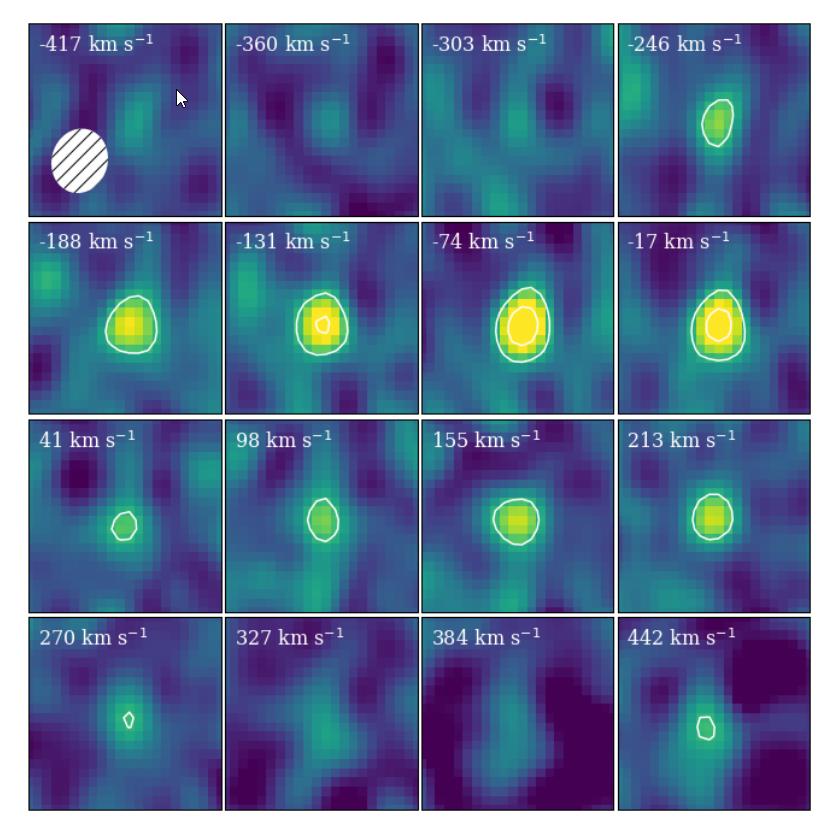
What does all of this mean?
First off, it tells us that these megamasers are out there, and at higher redshifts and greater distances than they’ve ever been detected at previously. It shows the capabilities of MeerKAT, and leads to an expectation that LADUMA alone, just a tiny part of the full Square Kilometer Array, will roughly double the number of known hydroxyl megamasers in only a few years. And finally, it sets a tantalizing expectation that the distance record for farthest megamaser will be broken numerous times in the coming years. In fact, with better observations, one quasar already observed to be 10.2 billion light-years away may have a tentative megamaser detection verified.
One possible surprise is that there’s a large motion seen in the megamaser itself, potentially indicating an outflow, possibly driven by a local starburst within the galaxy that hosts the megamaser, but also possibly driven by obscured activity in the galaxy’s nucleus. Whatever the case, we now know that these megamasers are out there at greater distances than we’ve ever seen before, which motivates us to search farther and deeper, and to continue building next-generation observatories to enable us to find what’s out there. We’re only just learning how galaxies grow and evolve in the Universe, and by adding megamasers into that equation, we’re poised to put together yet another piece of the cosmic puzzle.
